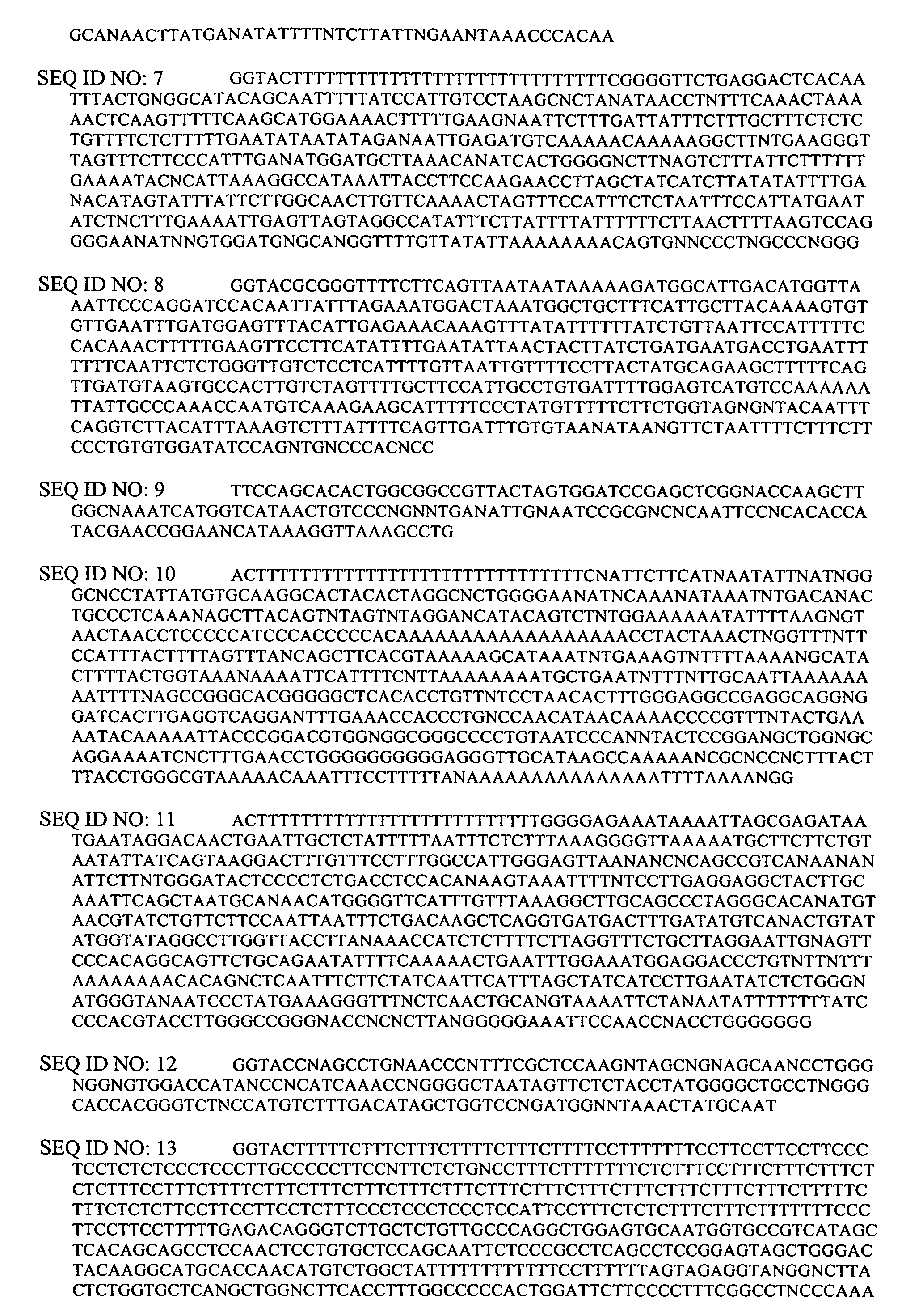Nucleic acid sequences differentially expressed in cancer tissue
a nucleic acid sequence and cancer tissue technology, applied in the field of nucleic acid sequences and proteins, can solve the problems of inherently risky, uncomfortable, and expensive endoscopy, and achieve the effect of modifying the expression level of nucleic acid
- Summary
- Abstract
- Description
- Claims
- Application Information
AI Technical Summary
Benefits of technology
Problems solved by technology
Method used
Image
Examples
Embodiment Construction
[0039] The invention relates to nucleic acids having the disclosed nucleotide sequences (SEQ ID Nos. 1-4470, 4472, 4474, 4476, 4478, 4480, 4482, 4484, 4486, 4488, 4490, 4492, and 4494), as well as full length cDNA, mRNA, and genes corresponding to these sequences, and to polypeptides and proteins encoded by these nucleic acids and genes, and portions thereof. In particular the invention relats to the full length cDNA sequence of SEQ ID Nos. 4472, 4474, 4476, 4478, 4480, 4482, 4484, 4486, 4488, 4490, 4492, and 4494 and the polypeptide sequence encoded thereby and shown in SEQ ID Nos. 4471, 4473, 4475, 4477, 4479, 4481, 4483, 4485, 4487, 4489, 4491, and 4493, respectively. The 4494 sequences disclosed herein were analyzed by comparing the sequences to those disclosed in publicly available databases. Based upon the search results, it was found that SEQ ID Nos: 1-503 contained novel sequences, SEQ ID Nos: 504-1103 contained known EST sequences, and SEQ ID Nos: 1104-4494 contained known ...
PUM
| Property | Measurement | Unit |
|---|---|---|
| temperature | aaaaa | aaaaa |
| temperature | aaaaa | aaaaa |
| temperature | aaaaa | aaaaa |
Abstract
Description
Claims
Application Information
 Login to View More
Login to View More - R&D
- Intellectual Property
- Life Sciences
- Materials
- Tech Scout
- Unparalleled Data Quality
- Higher Quality Content
- 60% Fewer Hallucinations
Browse by: Latest US Patents, China's latest patents, Technical Efficacy Thesaurus, Application Domain, Technology Topic, Popular Technical Reports.
© 2025 PatSnap. All rights reserved.Legal|Privacy policy|Modern Slavery Act Transparency Statement|Sitemap|About US| Contact US: help@patsnap.com



